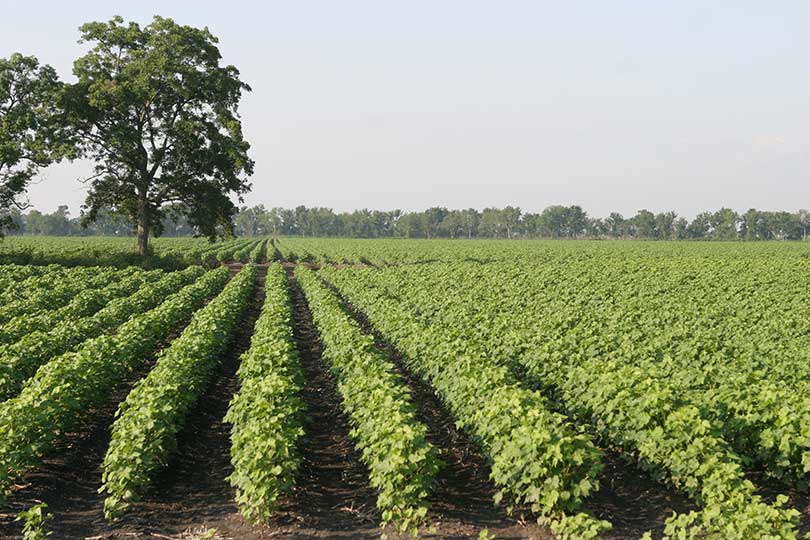By Jessica Domel
Multimedia Editor
Texas farmers are leading the way in the United States’ cotton production this year.
A recent forecast predicts 6.9 million acres will be planted in Texas alone. That’s an increase of about 22 percent over last year’s acreage, according to the U.S. Department of Agriculture’s National Agricultural Statistics Service (USDA NASS).
“When you look at the increase in the (cotton) crop across the United States, Texas is going to increase 1.25 million acres,” Steve Verett, executive vice president of Plains Cotton Growers, Inc., said. “That’s more than all the other states combined.”
Nationally, about 12 million acres are forecast, and 58 percent of that will be grown by Texas farmers from the Rio Grande Valley to the Panhandle.
“The Rio Grande Valley is off to a good start. The Coastal Bend is off to a good start. We’ll be seeing cotton planted in Central Texas pretty quick, and then here in another month, we’re going to be planting on the High Plains,” Verett said.
Higher cotton prices, decent soil moisture and a good quality crop last year all play a role in the forecast increase in cotton acreage, according to Verett.
“When you look at prices since 2015, cotton is up about 13 percent. Corn is down 8.5 percent. Soybeans are down 5.5 percent, and wheat is down about 32 percent,” Verett said.
If Texas is able to grow all of the acreage forecast by farmers, it could have an effect on the cotton market. In the meantime, all eyes will be on Texas.
“The market is going to be looking at Texas and looking at what happens with weather. So far, the cotton planting is coming along very nice,” Verett said. “It’s going to be a weather market. If we’re able to grow cotton on all those acres, it could have a tempering effect on the market. We’ve got to make it before we can ultimately see what’s going on with the price.”
In addition to the weather, pests and unwanted plants could also impact farmers this year.
Farmers on the High Plains and Rolling Plains have battled glyphosate-resistant pigweed for the past three to four years.
“It’s costing significantly more to have the same level of weed control when we were mainly relying on the Roundup system,” Verett said. “We’ve looked at a lot of different budgets, and it looks like we’ve added at least $40 an acre to weed control costs over the last two to three years. It’s difficult to find a way to cover those costs.”
The only way to make up the cost of the additional weed control is to have larger yields or an above-average crop.
“That’s one of the biggest challenges we have now,” Verett said. “One of the things that’s going to help is new technologies that were finally approved this winter. That’s both the Enlist technology with Dow and the Extend technology with Monsanto.”
Enlist is designed for 2,4-D-resistant cotton. Extend is designed to help with dicamba resistance.
Farmers who are using different technologies will have to be more mindful of what they’re using, as well as what neighbors are using throughout the cotton-growing season.
“If you don’t have all of the same kind of technology, you have to be careful and really mindful of that and make sure you don’t get in the wrong field. You have to be concerned much more with drift and making sure what you spray on your farm stays on your farm,” Verett said.
From a soil profile prospective, most cotton farmers have or will go into the planting season with good moisture.
“Most areas will need a planting rain, but we’re not going in with an empty subsoil profile. With just a good, normal planting rain, we’re going to be off to the races,” Verett said. “We should be in pretty good shape to carry us into where the crop is going to need more rain when it goes to blooming.”
Although there’s plenty to be positive about this cotton-growing season, there are still a few worries, including China.
“China has been hanging over our head for the last two to three years with a large stockpile they have,” Verett said. “Thankfully, they’re finally working through some of those stocks and getting them down to what we hope will be a more manageable level.”
Those stocks, at least until this point, have not been available to much of the outside market, according to Verett. And when China is using its own cotton, they don’t impo

